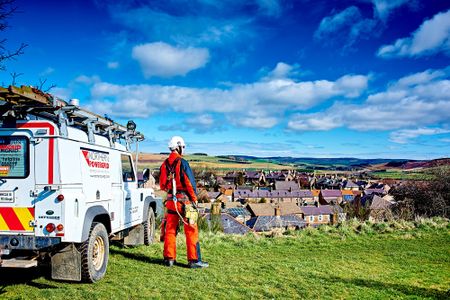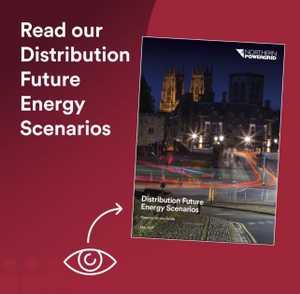
The role of system planning
How do you plan a local energy network that will serve eight million customers three decades from now? With decarbonisation an urgent priority locally, nationally and globally, understanding and predicting how the network will change is more critical than ever.
And more difficult than ever, because we don’t yet know what the energy transition to net zero will look like, or how quickly it will happen. Net zero could be achieved by a significant system transformation and the advancement and uptake of hydrogen technologies. We could also reach it through consumer behaviour changes and the acceleration of low carbon technologies such as electric vehicles (EVs) and heat pumps. We might meet the goal earlier or later than planned.
Which is why we model decarbonisation transitions to describe possible energy futures across the North East, Yorkshire and northern Lincolnshire. Every year, to coincide with the National Grid’s Future Energy Scenarios (FES), we plug in our comprehensive regional data, local knowledge, and engagement with stakeholders, to produce these Distribution Future Energy Scenarios (DFES) – five potential pathways that all lead to net zero.
Because our job isn’t just to predict the future. It’s to ensure that we plan a resilient, reliable and safe network that can keep the lights on when we get there (however we get there).
 Our DFES scenarios
Our DFES scenarios
Our DFES 2020 was created in December 2020 and has within it the following future scenarios:
Steady progression: the slowest credible decarbonisation pathway with minimum behaviour change. This scenario sees the UK miss net zero by 2050.
System transformation: decarbonisation is rooted in the uptake of hydrogen as a technology and indicates behaviour change at a system level but not a consumer level.
Consumer transformation: a strong shift in consumer behaviour to electric low carbon technologies such as (EV) and heat pumps.
Leading the way: fastest credible decarbonisation pathway that demonstrates both consumer and system behaviour change and utilises hydrogen and electrification as routes to zero carbon.
Net Zero Early* : rapid regional decarbonisation, expected to reach net zero in the 2040s. This scenario demonstrates a highly accelerated uptake of electric heat and transport within a system that balances this electricity demand with decentralised and distributed renewable generation.
Collaboration with our customers
The strength of our data comes from consistent engagement with our stakeholders to ensure any plans that affect the demands of our network are reflected in our modelling.
As a cornerstone of the regional economy, we are working collaboratively with local authorities, low carbon technology installers, housing developers, car dealerships and many other sectors to be sure that the electricity we provide is a driver of a green economic recovery across the region.
This is encapsulated by the Green Recovery programme, with which we are investing £53 million in our network in locations where additional demand can unlock early economic development that supports environmentally sustainable growth. DFES data and system planning provided the crucial insights to identify where we can support stakeholders whose plans will contribute to a prosperous and zero carbon future for our communities. Now, areas including Newcastle city centre, Wetherby services and Immingham Freeport will all have local network capacity expanded, thanks in no small part to the insights that our 2020 DFES provides.
Showing realistic ambition
As a key enabler of regional decarbonisation, we have not stood still. Since we published DFES 2020 in December, and using the Committee on Climate Change’s (CCC) decarbonisation targets, we have evolved our own ambitious Net Zero Early scenario into our ‘Planning Scenario’ which will inform our system planning decisions for the (2023-2028). We are a cornerstone of our region’s economy and its transition net zero, and we are confident our aspiring scenarios are aligned with national policy.
Good system planning is how we deliver decarbonisation, while providing a robust and available network to our customers. By identifying where additional capacity is required, we are better able to meet the growing demands of those that we serve. And as our energy system undergoes its net zero transformation, we are committed to being ambitious as well as pragmatic.
We are confident that the communities and businesses we serve are passionate about delivering a green economic recovery that achieves net zero as soon as possible. Our 2020 DFES both allows us to aspire to such heights, but also helps us maintain a flexible view of our energy network, so that we can continue to support our region with reliable, safe and low carbon power.
By Simon Jesson, System Planning Manager, Northern Powergrid
*Please note that our DFES 2021 and RIIO-ED2 business plans will include our Planning Scenario rather than Net Zero Early



